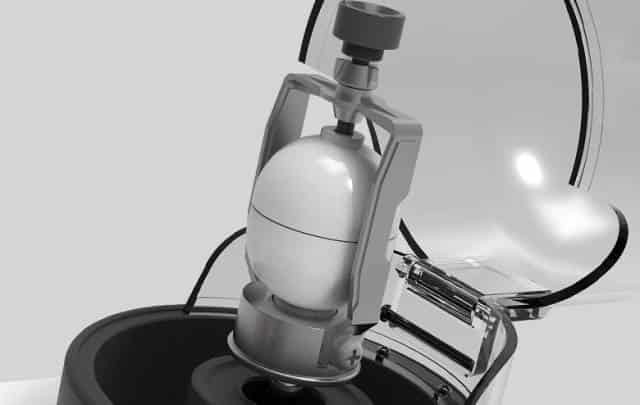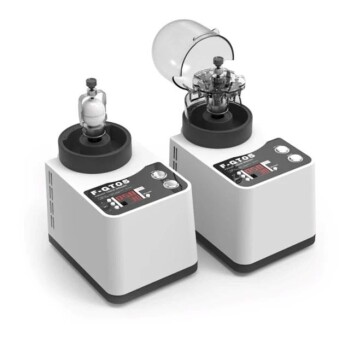Introduction to Micro Tissue Grinder
The Micro Tissue Grinder is an essential biomedical research equipment used for grinding tissue samples into tiny particles, allowing for the release of cells and intracellular materials for further analysis and research. This section will provide an overview of the features, usage, and benefits of the Micro Tissue Grinder.
Principle and Structure of Micro Tissue Grinder
A tissue grinder is an essential instrument in laboratories for grinding tissue samples into fine particles, releasing cells and intracellular substances. This enables subsequent analysis and research. It plays a pivotal role in tasks such as separating cells and preparing tissue homogenates. The principle of a tissue grinder typically involves high-speed rotating blades or hammering to achieve the desired particle size. Furthermore, its structure comprises crucial components, including the motor, blade/hammering device, base, and grinding chamber, often constructed from glass or plastic.

In line with maintaining sample integrity, the significance of mechanical milling is emphasized. While the "coffee grinder" approach is suitable for relatively inert materials, it can introduce heat- and shear-related anomalies for heat-sensitive materials. An alternative approach is through jet mills, which propel samples around a chamber at the speed of sound, continuously reducing particle size through high-speed collisions. This method is particularly effective with heat-sensitive materials due to the minimal heat generation and the absence of moving parts or screens.
Grinding plays various vital roles in engineering, such as increasing the surface area of a solid, manufacturing a solid with a desired grain size, and pulping of resources. In this context, a notable equipment is the ball mill, which typically consists of a slightly inclined or horizontally rotating cylinder partially filled with balls. Ball mills are characterized by their smaller diameter and longer length and are commonly used in laboratories for sample material grinding and quality assurance purposes.
The Micro Tissue Grinder provides an effective means of achieving the necessary tissue sample preparation for diverse laboratory applications. Its structure and grinding principle are meticulously designed to ensure optimal performance and reliability.
Usage and Precautions
Tissue grinders are widely used in various fields including biology, medicine, and chemistry. In biological and medical research, tissue grinders are commonly used in cell biology, immunology, and neuroscience studies. For instance, they can be employed to prepare cell suspensions for cell culture, isolate cells, and conduct apoptosis research in cell biology. In immunological research, tissue grinders are used to prepare antigens and antibodies, while in neuroscience research, they aid in the preparation of brain tissue and neurons. Additionally, tissue grinders find application in chemistry for the preparation of nanomaterials and drug research and development.
When using a tissue grinder, it is crucial to follow proper sample handling practices, prioritize safety, consider the budget and intended application, and take into account the sample quantity and specific characteristics for efficient and effective sample preparation.

Laboratory grinders enable the grinding of solid samples into fine powders or uniform particles. They offer several advantages:
-
Efficiency: Laboratory grinders use high-speed rotating grinding media (such as ceramic balls) to impact and rub the sample, achieving a fast and efficient grinding process.
-
Uniformity: The evenly distributed grinding media ensures that the sample reaches a high degree of uniformity in a short time, which is crucial for subsequent experiments such as chemical analysis and spectral measurement.
-
Time-saving: Compared with traditional manual grinding methods, laboratory grinders significantly shorten grinding time and improve experimental efficiency.
-
Wide Applicability: Suitable for various types of solid samples, including metals, ceramics, glass, and plastics, laboratory grinders can handle samples of varying hardness and toughness.
-
Ease of Operation and Maintenance: Most laboratory grinders are simple to operate and maintain. Additionally, the maintenance cost of the equipment is relatively low, making it easy for users to perform daily maintenance and upkeep.
However, laboratory grinders also have some limitations:
-
Sample Loss: Part of the sample may adhere to the grinding media or the container wall, resulting in sample loss.
-
Temperature Sensitivity: High-speed rotating grinding media may cause the temperature of the sample to increase, affecting the structure and performance of some heat-sensitive samples. To mitigate this, a grinder with a cooling function or cryogenic grinding technology should be used.
-
Cross-contamination: When processing different samples, cross-contamination of the grinding media and containers may occur, which can be avoided by adequate cleaning and disinfection between samples.
-
Noise and Vibration: Laboratory grinders produce a certain amount of noise and vibration during operation, which may impact the surrounding environment and the comfort of the experimenter.

To effectively use the tissue grinder, it is essential to:
-
Choose the Appropriate Abrasive: Select the abrasive (e.g., glass beads, steel beads) based on the experimental requirements.
-
Adjust Grinding Parameters: Modify grinding time, speed, and intensity according to the experimental requirements.
-
Cleaning: Clean the grinding chamber and tools before and after use to prevent contamination and cross-contamination.
Application Fields of Micro Tissue Grinder
The Micro Tissue Grinder plays a crucial role in various application fields, including biology, medicine, and chemistry. In the field of cell biology, it is extensively used to prepare cell suspensions for cell culture, cell isolation, and apoptosis studies. Furthermore, in immunology, the Micro Tissue Grinder is employed for the preparation of antigens and antibodies for immunological detection and technology. Its application in neuroscience includes the preparation of brain tissue and neurons for research and technological advancements. Additionally, in the realm of chemistry, the Micro Tissue Grinder is utilized in the preparation of nanomaterials, as well as research and development in the pharmaceutical industry. The diverse applications of the Micro Tissue Grinder underscore its significance in facilitating research and technological advancements across various domains.
Related Products
- Laboratory Micro Tissue Grinding Mill Grinder
- Laboratory Hybrid Tissue Grinding Mill
- Laboratory High Throughput Tissue Grinding Mill Grinder
- Laboratory Grinding Mill Mortar Grinder for Sample Preparation
- Lab Vibration Mill
Related Articles
- Understanding the Dry Bag Cold Isostatic Press Machine by KinTek
- Features of Different Laboratory Mills: An Overview
- Maximizing Grinding Efficiency: The Power of Planetary Ball Mills
- Application of Ultra-Micro Pulverization Technology in the Food Industry
- Development and Principles of Frozen Tissue Crushers








